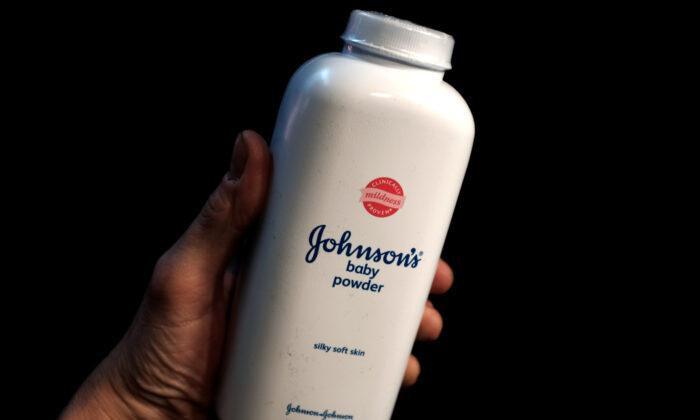NEW YORK—Johnson & Johnson has set aside $400 million to resolve U.S. state consumer protection actions as part of its broader $8.9 billion effort to settle claims that its Baby Powder and other talc products cause cancer.
J&J subsidiary LTL Management filed a bankruptcy plan in New Jersey late on Monday that details how the company intends to pay different types of cancer victims in a bankruptcy settlement. J&J has said that its talc products are safe and do not cause cancer. It is attempting for a second time to resolve more than 38,000 lawsuits in bankruptcy and prevent new cases from coming forward in the future.
LTL’s bankruptcy plan would pay $400 million into a separate trust for claims filed by state attorneys general alleging that J&J violated state unfair business practices and consumer protection laws by misleading consumers about the safety of its talc products.
Several states had begun consumer protection actions against J&J before LTL’s first bankruptcy filing stopped those investigations from moving forward in 2021. New Mexico and Mississippi had already filed lawsuits against Johnson & Johnson before then, and the states of Arizona, Maryland, North Carolina, Texas, and Washington had issued civil investigative demands or subpoenas, according to LTL’s court documents.
New Mexico and Mississippi have moved to dismiss LTL’s bankruptcy, joining cancer victims and the Justice Department’s bankruptcy watchdog, who have argued that a profitable company like J&J cannot benefit from bankruptcy protections meant for struggling debtors.
LTL’s first attempt at resolving the lawsuits in bankruptcy was dismissed after similar arguments, when a U.S. appeals court ruled that LTL was not in “financial distress” and ineligible for bankruptcy protection. LTL filed a second bankruptcy just over two hours after that dismissal, arguing that its second attempt was different because it had less money available and more support for a settlement.
New Mexico and Mississippi said in their motion to dismiss that LTL’s renewed bankruptcy violates state law enforcement powers by attempting unilaterally to cap the company’s liability for state consumer protection actions.
LTL’s new filings also included more details on how the company would evaluate and pay cancer claims if the bankruptcy plan is approved.
The highest payments under the settlement would be $500,000 for people diagnosed with terminal mesothelioma before age 45, and $260,000 for people diagnosed with terminal ovarian cancer before age 45.
From there, the proposed settlement applies discounts depending on the type and severity of cancer, the individual’s age, history of talc use and other factors. For example, a woman who used talc products weekly, had a family history of ovarian cancer and was diagnosed with stage II ovarian cancer at age 55 could be in line for a $21,125 payout under the plan.





